Caballero B. (ed.) Encyclopaedia of Food Science, Food Technology and Nutrition. Ten-Volume Set
Подождите немного. Документ загружается.


See also: Elderly: Nutritionally Related Problems;
Sensory Evaluation: Sensory Characteristics of Human
Foods; Food Acceptability and Sensory Evaluation;
Practical Considerations; Sensory Difference Testing;
Sensory Rating and Scoring Methods; Descriptive
Analysis; Appearance; Texture; Aroma; Taste; Spices
and Flavoring (Flavouring) Crops: Properties and
Analysis; Sucrose: Properties and Determination;
Sweeteners: Intensive; Taste Enhancers
Further Reading
Breslin PAS (1996) Interaction among salty, sour and bitter
compounds. Trends in Food Science & Technology
7(Special Issue on Flavour Perception).
Cardello AV (1996) The role of the human senses in food
acceptance. In: Meiselman HL and MacFile HJH (eds)
Food Choice, Acceptance and Consumption, pp. 1–82.
London: Blackie Academic.
DuBois GE, Walters DE and Kellogg MS (1993) Mechan-
ism of human sweet taste and implication for rational
sweetener design. In: Chi-Tang Ho and Manley CHH
(eds) Flavour Measurement, Basic Symposium Series, pp.
240–266. Chicago, IL: Institute of Food Technologists.
Erickson RP (2000) The evaluation of neural coding ideas
in the chemical senses. In: Physiology and Behavior,
vol. 69, Issues 1, 3–13. New York: ElsevierScience.
Grenby TH (1989) Progress in Sweeteners, pp. 1–394.
London: Elsevier Applied Science.
Halpern BP (1997) Psychophysics of taste. In: Beau-
champ GK and Bartoshuk L (eds) Tasting and Smell-
ing, pp. 77–123. San Diego, CA: Academic Press.
Kawamura Z and Kare MR (1987) Umami. A Basic Taste.
New York: Marcel Dekker.
Lawless HT and Lee CH (1993) Taste. In: Acree TE and
Teranishi R (eds) Flavour Science, Sensible Principles
and Techniques, pp. 23–131. Washington, DC: Ameri-
can Chemical Society.
Mistretta CM and Hill DL (1995) Development of the taste
system: basic neurology. In: Doty RL (ed.) Handbook of
Oflaction and Gustation, pp. 635–668. New York:
Marcel Dekker.
Nabors LB and Gelardi RC (eds) (1991) Alternative Sweet-
eners, pp. 1–459. New York: Marcel Dekker.
Pangborn RM (1987) Selected factors influencing sensory
perception of sweetness. In: Dobbing J (ed.) Sweetness,
pp. 49–66. London: Springer.
Piggott JR (1988) Sensory Analysis of Foods, 2nd edn.,
pp. 1–425. London: Elsevier Science.
Rouseff RL (1990) Bitterness in Foods and Beverages,
pp. 1–356. Amsterdam: Elsevier.
Shallenberger RS (1993) Taste Chemistry, pp. 1–570.
Glasgow: Blackie Academic & Professional.
Walters DE, Orthoefer FT and Dubois GE (1991) Sweeten-
ers: Discovery, Molecular Design and Chemoreception,
pp. 1–333. Washington, DC: American Chemical
Society.
Wendin K (1999) Chemical Senses and Food Quality Per-
ception, pp. 1–52. Gothenburg, Sweden: The Swedish
Institute for Food and Biotechnology.
SEPARATION AND CLARIFICATION
J E Lozano, Plapiqui (Uns-Conicet), Bahı
´
a Blanca,
Argentina
Copyright 2003, Elsevier Science Ltd. All Rights Reserved.
Background
0001 Every year thousands of different processed food
products are introduced in supermarkets. Food pro-
cessing has three major aims: (1) to make food
toxically and microbiologically safe; (2) to provide
products of the highest nutritional and organoleptic
quality; and (3) to make foods with ease of use.
0002 Most food-processing comprise a series of physical
processes, or unit processes, that can be separated
into a number of basic operations, or unit operations,
which depend upon coherent physical principles.
0003 The main unit operations usually present in a
typical food-processing line, including:
1.
0004Flow of fluid – when a fluid is moved from one
point to another by pumping, gravity, etc.
2.
0005Heat transfer – in which heat is either removed or
added (heating; cooling; refrigeration and freez-
ing).
3.
0006Mass transfer – whether or not this requires a
change in state. Processes that use mass transfer
include drying, distillation, evaporation, crystal-
lization, and membrane processes.
4.
0007Other operations requiring energy, such as mech-
anical separation (filtration, centrifugation, sedi-
mentation, and sieving); size adjustment by size
reductions (slicing, dicing, cutting, grinding) or
size increase (aggregation, agglomeration, gel-
ation); and mixing, which may include solubiliz-
ing solids, preparing emulsions or foams, and dry
blending of dry powders (flour, sugar, etc.).
0008For example, the manufacture of concentrated
clarified apple juice includes several unit operations
SEPARATION AND CLARIFICATION 5187
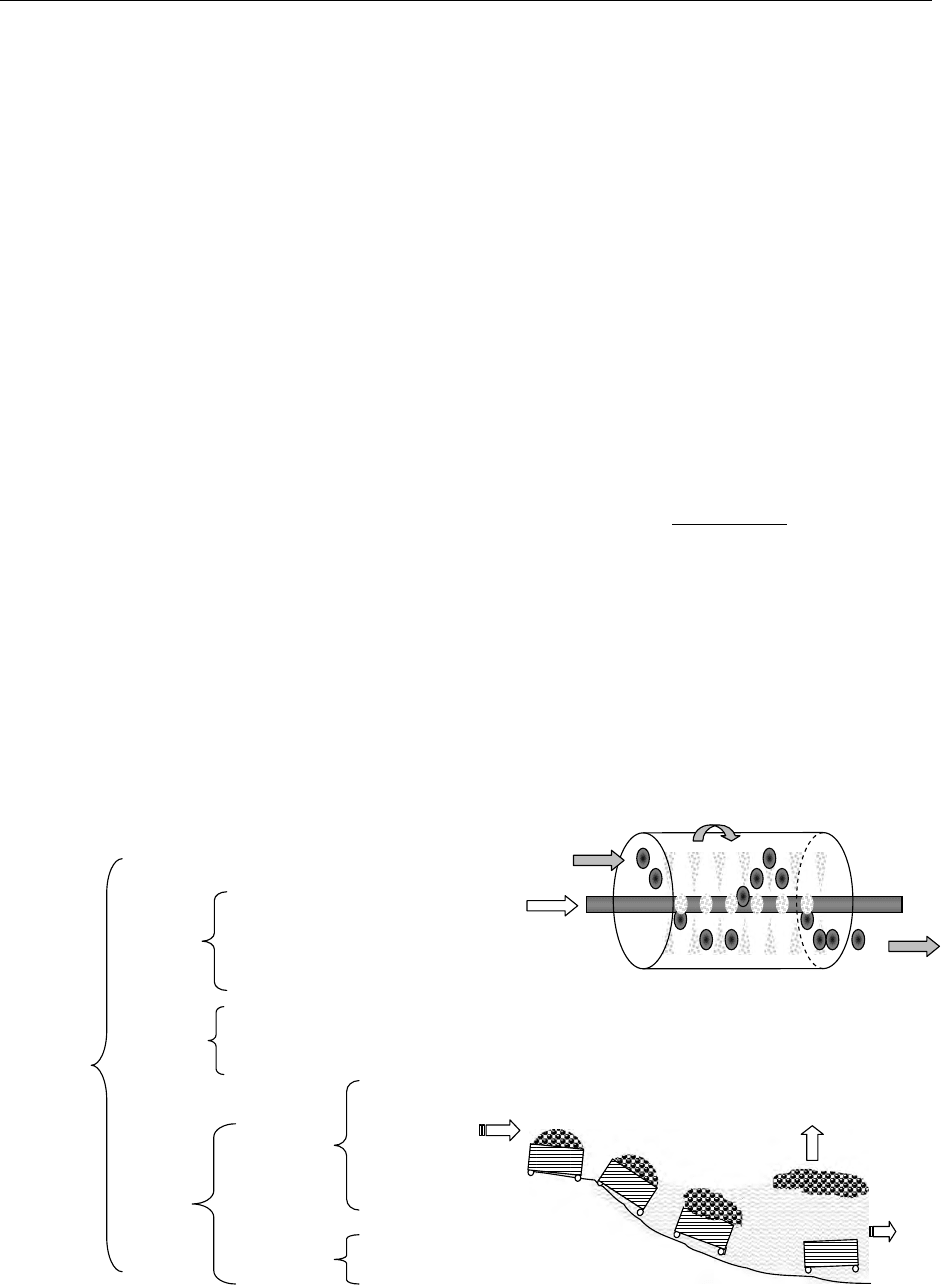
such as size reduction, pressing, heating, pumping,
and evaporating, in sequence.
Separation Processes
0009 Separation technologies, including extraction and
sedimentation, are widely used in the food industry
and basic knowledge on separation science is required
to design a process properly. Separation in food usu-
ally implies pumpable suspension of solids in a liquid
(water solution of true solutes, like sugars) or wet
solid (e.g., fruit pulp). Separations can be achieved
on the basis of density or size and shape, and may be
classified into settling (or flotation), filtration, and
expression methods (Figure 1). Washing, a typical
food process, may also be considered a separation
process in which soil or some other undesirable com-
ponent is eliminated by the combined use of water
and mechanical methods.
Washing
0010 Washing of foods includes soaking, brushing, and the
application of chlorine or water spraying. Heavy
spray and rotary brush wash applications may also
be required to remove any rot. Many products such as
mechanically harvested berries are air-cleaned on
mesh conveyors or vibrator passing over an air jet.
Washers are conveyor belts or roller conveyors with
water sprays, reel (cylinder) type with internal spray
(Figure 2), brushes, and/or rubber rolls with or with-
out studs. Vibratory-type washers are very effective
for berries and small fruits. Brushes are effective to
eliminate rotten portions of fruits, thus preventing
problems with yeast toxins.
Settling
0011Settling is the use of the force of gravity to cause
particles to settle down the liquid food. Although
settling does not give a complete separation, it is
often the best way to process very large volumes of
a food suspension and remove most of the liquid. The
concentrated suspension can then be filtered with
smaller equipment and the cloudy liquid can be clari-
fied if necessary. Settlers can also be used for classify-
ing particles by size or density, which is not usually
possible with filtration.
0012Gravitational separation Separation by the action
of gravity, or sedimentation, can be represented by
Stoke’s law:
V
p
¼
g
p
1
D
p
18
ð1Þ
where V
p
¼the velocity of particles (m s
1
); r
1
¼
specific gravity of liquid media (kg m
3
); r
p
¼specific
gravity of particles (kg m
3
); D
p
¼ mean diameter of
particle (m); m ¼ viscosity of liquid media (Pa s
1
);
and g ¼ gravitational constant (m s
2
). Solid–liquid
separation by screening is also possible for some food
suspensions, including coarse particles (fruit juice
from belt presses), but it is not widely applicable.
Continuous
Batch
Pressing
Gravitational
Pressure
Cross-flow
units
Flow-through
filters
Centrifugal
Vacuum
Filtration
Membrane
filtration
Settling
Flotation
Gravitational
Centrifugal
Basic food
separation
methods
Washing
fig0001 Figure 1 Separation methods commonly used in the food
industry.
Fruit in
Water in
Fruit out
fig0002Figure 2 Reel washer with internal spray.
Bins in
Bins
out
Flotation
fig0003Figure 3 Example of the use of flotation for separation of fruits
from container (bins).
5188 SEPARATION AND CLARIFICATION
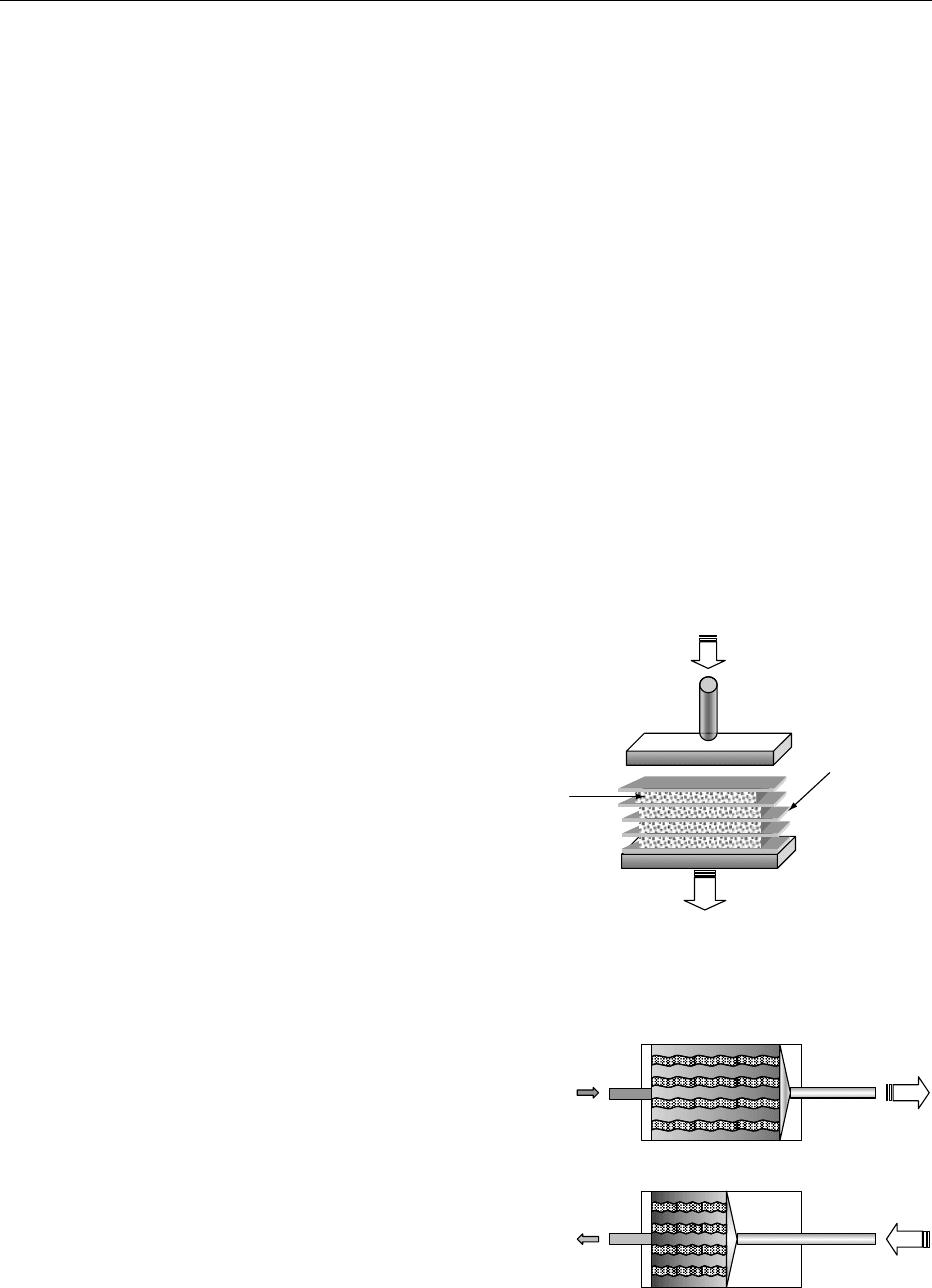
0013 Flotation A typical example of flotation as a separ-
ation process is unloading fruits into a silo system.
Harvesting containers, known as bins, are commonly
used to transport fruit from the orchard to the
processing plant. Once in the plant, bin dumping
unloading and soil and foreign material separation
can be performed by flotation (this is good for fruits
with density < 1, like apples), as Figure 3 shows.
0014 Centrifugation Centrifugal separation is a process
which is quite often used in the food industry. In the
dairy industry, for example, uses of centrifugal force
include butter oil purification (separation of serum
phase from anhydrous milk fat); clarification (re-
moval of solid impurities from milk); separation of
fat from whey; skimming and standardizing.
0015 Centrifugation is based on the same Stoke’s law
presented in eqn (1) by changing the force of gravity
g by (ro
2
), where r ¼radius of axis of rotation; and
o ¼angular velocity. Stoke’s equation (eqn (1)) indi-
cates that a fat globule with a diameter of 2 mm will
rise four times faster than a fat globule with a
diameter of 1 mm.
0016 Modern centrifuges are self-cleaning, allowing a
continuous separation/clarification process. Centri-
fuges have also been used in preparing fruit juice
from which sediment and microorganisms can be
removed centrifugally in a clarifier, which are disk-
type centrifuges that employ forces of 5000–10 000
times gravity.
Pressing
0017 Solid–liquid separation is concerned in this article
with mechanical processes for the separation in
foods of water (including soluble solids) and finely
divided insoluble particles. Expression is the removal
of relatively small content of liquid from compres-
sible milled food, by mechanical means. The way to
separate most water and soluble solids depends on the
food.
0018 For citrus fruits there are three main types of
extractors: (1) The FMC-type (FMC Corporation,
Lakeland, USA) citrus juice extractor which basically
consists of a pair of cups that cut two holes in the
fruit, separate the peel, and move the peeled fruit into
a strainer tube where the juice is separated from the
seeds and the rest of the fruit; (2) the Brown-type
extractor (Automatic Machinery & Electronic, Los
Angeles, USA); in which fruit is cut in half, the halves
placed in rubber cups and the juice removed by rotat-
ing plastic reamers; and (3) the rotary press, in which
fruit is cut in halves and juice extracted in rotary
cylinders.
0019 Most systems for extracting juices from apple and
similar fruit and vegetable pulps use some method of
pressing juice through cloth of various thickness, in
which pomace is retained. These systems are called
filter presses and usually come in three main types: (1)
rack-and-cloth press; (2) horizontal pack press; and
(3) continuous belt press.
1.
0020In a rack-and-cloth press the milled fruit pulp is
placed in a nylon, Dacron or polypropylene cloth
to form a ‘cheese’ with the help of a cheese frame-
work. Layers of pulp cheeses, separated by racks
made of hardwood or plastic, are stacked up to
1 m or more in height depending on the maturity
of the fruit and the size of the racks (Figure 4).
Rack-and-cloth presses are efficient but very labor-
intensive in operation, cleaning and repairing.
2.
0021Cage presses are horizontal presses with enclosed
cages of several cubic meters in which pressing
takes place. The cage is filled with a complex filter
system consisting of grooved flexible rods filled
with sleeves of press cloth material (Figure 5a).
Juice passes from the pulp, through press cloth
sleeves, along grooves in the flexible rods, and
out to collecting channels in the ends of the cage
Pulp
cheese
Racks
Press
Expressed juice
fig0004Figure 4 Rack-and-cloth press.
Pulp in
Juice out
(a)
(b)
fig0005Figure 5 Hydraulic press: (a) loading; (b) pressing/extraction.
SEPARATION AND CLARIFICATION 5189
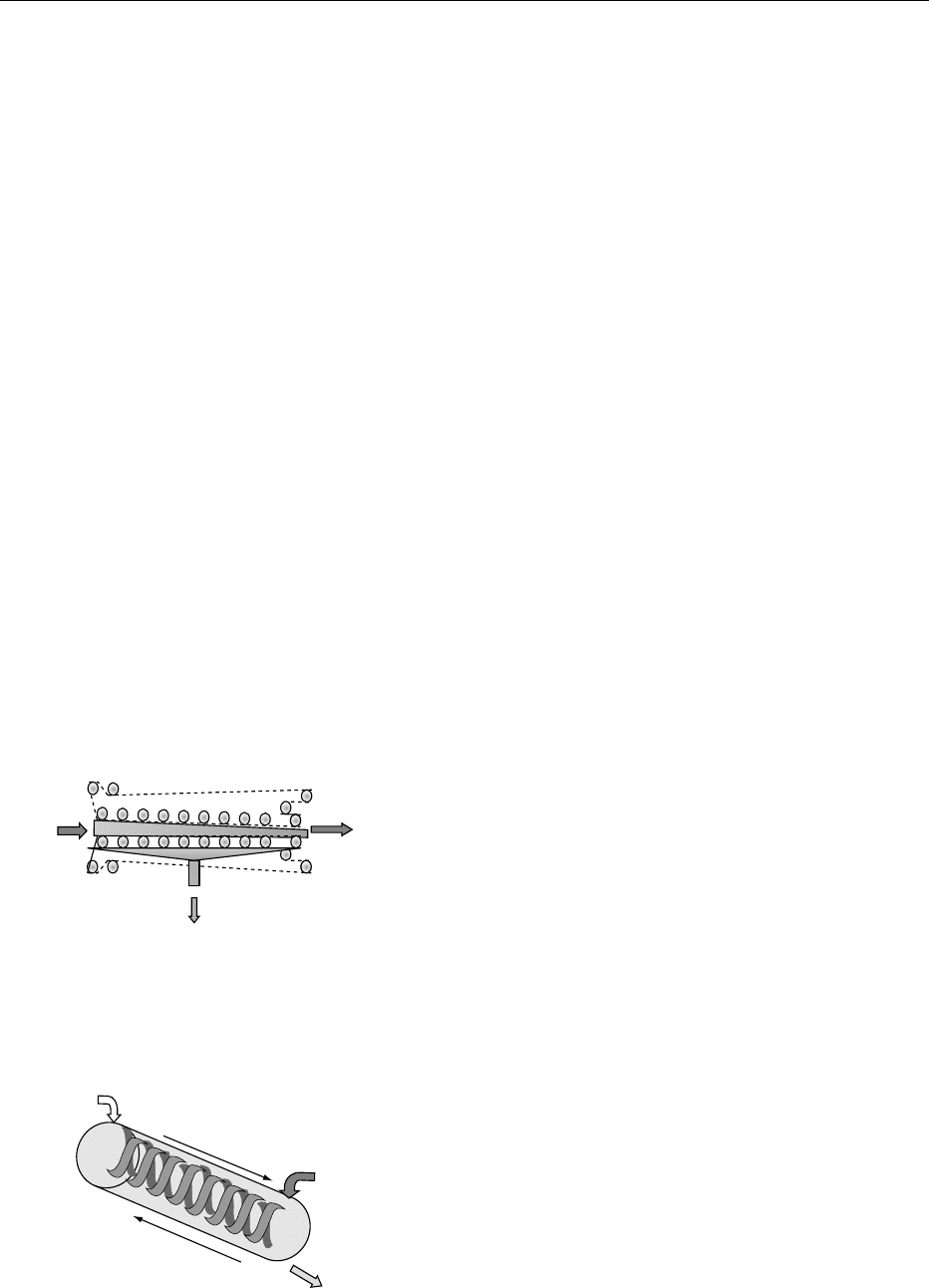
and in the piston (Figure 5b). The drum may be
rotated, breaking up the pulp, and adding more
water, permitting a second pressing with more
juice extraction. The whole process may be auto-
mated. Although some cleaning labor is saved,
rods and sleeves require a considerable amount
of maintenance.
3.
0022 Continuous belt presses are based in the Ensink
design for paper pulp pressing. This type of press
offers a truly continuous operation (Figure 6). In
belt presses, a layer of mash (pulp) is pumped on to
the belt entering the machine. Press aid may be
added for improved yield.
4.
0023 Screw presses. A typical screw press consists of a
stainless-steel cylinder screen enclosing a large-
bore screw with narrow clearance between screw
and cylinder. Adjustable backpressure is usually
provided at the end of the chamber. Breaker bars
must be incorporated to disrupt the compressing
mash.
5.
0024 Diffusion extraction. Typically used for the extrac-
tion of sugar from sugar beets (Figure 7), diffusion
extraction is a typical countercurrent-type process.
It is desirable to retain the same driving force,
DC (concentration of soluble components in solids
vs concentration of soluble components in liquid).
In order to maintain a constant DC throughout the
extraction process, it is necessary to carry out a
continuous weighing of feed and to control the
water flow to the counterflow extractor by
means of a control loop. The diffusion extraction
process is influenced by a number of variables
(temperature, raw product size, water, etc.)
Extracted products are usually passed through a
conventional press system and the very dilute
juice may be returned to the extractor.
0025Hydraulic pressing does not usually requires the
addition of press aids, unless exceptionally overma-
ture fruit is used. For continuous screw presses, how-
ever, it is usually necessary to add 1% (w/w) or more
of cellulose. Mixing off cellulose and fruit occurs in
the mill and subsequent pumping to press.
Filtration
0026Filtration is also a mechanical process designed for
clarification by removing insoluble solids from a
valuable liquid food, by the passage of most of the
fluid through a porous barrier which retains most of
the solid particulates contained in the food. The piece
of equipment by which filtration is performed is
named the filter. The filter medium, which may be a
screen, cloth, paper, or bed of solids, is the barrier
that lets the liquid pass while most of the solids are
retained. The liquid that passes through the filter
medium is called the filtrate. Filtration and filters
can be classified in several ways, including:
1.
0027Driving force: The filtrate is induced to flow
through the filter medium by:
c.
0028Hydrostatic head (gravity)
d.
0029Pressure (upstream filter medium)
e.
0030Vacuum (downstream filter medium)
f.
0031Centrifugal force across the medium
2.
0032Filtration mechanism:
a.
0033Cake filtration (solids are retained at the sur-
face of a filter medium and pile upon one
another)
b.
0034Depth or clarifying filtration (solids are
trapped within the pores or body of the filter
medium)
3.
0035Operating cycle:
a.
0036Intermittent (batch)
b.
0037Continuous rate.
0038These methods of classification are not mutually
exclusive. Thus filters are usually divided first into the
two groups of cake and clarifying equipment, then
into groups of machines using the same kind of
driving force, then further into batch and continuous
classes. Some filtering devices usually employed in the
food industry are described below.
0039Pressure filters The main advantages of pressure
filtration compared to other filtering methods are
Pulp in
Bagasse out
Juice out
fig0006 Figure 6 Typical fruit belt press.
Water
Sugar beets
Warm-water
inlet
Sugar beets in
Sugar solution
outlet
fig0007 Figure 7 Diffusion extraction process.
5190 SEPARATION AND CLARIFICATION

that cakes are obtained with very low moisture con-
tent; clean filtrates may be produced by recirculating
the filtrate or by precoating; and solutions may be
polished (finished) to a high degree of clarity. Among
the disadvantages it must be noted that cloth washing
is difficult and precoat is required; the operator
cannot see the forming cake and is unable to carry
out an inspection while the filter is in operation; the
internals are difficult to clean, and this may be a
problem with food-grade applications.
0040 With the exception of the rotary drum pressure
filter, these types of filters are semicontinuous ma-
chines in which wash and cake discharge are per-
formed at the end of the filtration cycle. Since the
operation is in batches, intermediary tanks are re-
quired. The collection of filtrate depends on the oper-
ating mode of the filter, which can be constant flow
rate, constant pressure, or both, with the pressure
rising and flow rate reducing during filtration. The
filtration rate is mainly influenced by the properties
of food (particle size and distribution, presence of
gelatinous solids like pectin, liquid viscosity, etc.)
Although continuous-pressure filters are available,
they are mechanically complex and expensive, so
they are uncommon in the food industry.
0041 Filter Aid and Precoating Filter aid and precoating
are often mentioned as in the case of pressing, in
connection with pressure filtration. Filter aid is used
when the pulp or turbid liquid food is low in solids
content, with fine and muddy particles that are diffi-
cult to filter. To enhance filtration, coarse solids are
used with large surface area that capture and trap in
their interstices the slow-filtering particles from the
suspension, producing a porous cake matrix.
0042 On the other hand, precoating is the formation on
the filter plates of a defined thick medium of a known
permeability. Precoating prior to filtration serves
when the particles to separate are gelatinous and
sticky, forming a barrier that avoids cloth blinding.
The filter aids and precoating materials most com-
monly employed in the food industry are: diatom-
aceous earth (silicaceous skeletal remains of aquatic
unicellular plants); perlite (glassy crushed and heat-
expanded volcanic rock); cellulose (fibrous, light-
weight, and ashless paper); and special groundwood.
0043 Types of pressure filters Pressure filters usually
found in the food industry are:
1.
0044 Filterpress, also named plate-and-frame, consists
of a head and follower contained between a pack
of vertical rectangular plates supported by side or
overhead beams (Figure 8). The head serves as a
fixed end to which the feed and filtrate pipes are
connected and the follower moves along the
beams and presses the plates together during the
filtration cycle by a hydraulic or mechanical mech-
anism. Each plate is dressed with filter cloth on
both sides and, once pressed together, they form a
series of chambers that depend on the number of
plates. The plates generally have a centered feed
port that passes through the entire length of the
filterpress, so that all the chambers of the plate
pack are connected together.
2.
0045Vertical and horizontal pressure leaf filters consist
of a vessel that is fitted with a stack of vertical
Feed
Filtrate
Feed
Filtrate
out
Filtrate
out
Plate
fig0008Figure 8 Filterpress operation sketch and details of filtering
plate.
Feed in
Filtrate out
Plates
fig0009Figure 9 Horizontal plate filter.
SEPARATION AND CLARIFICATION 5191
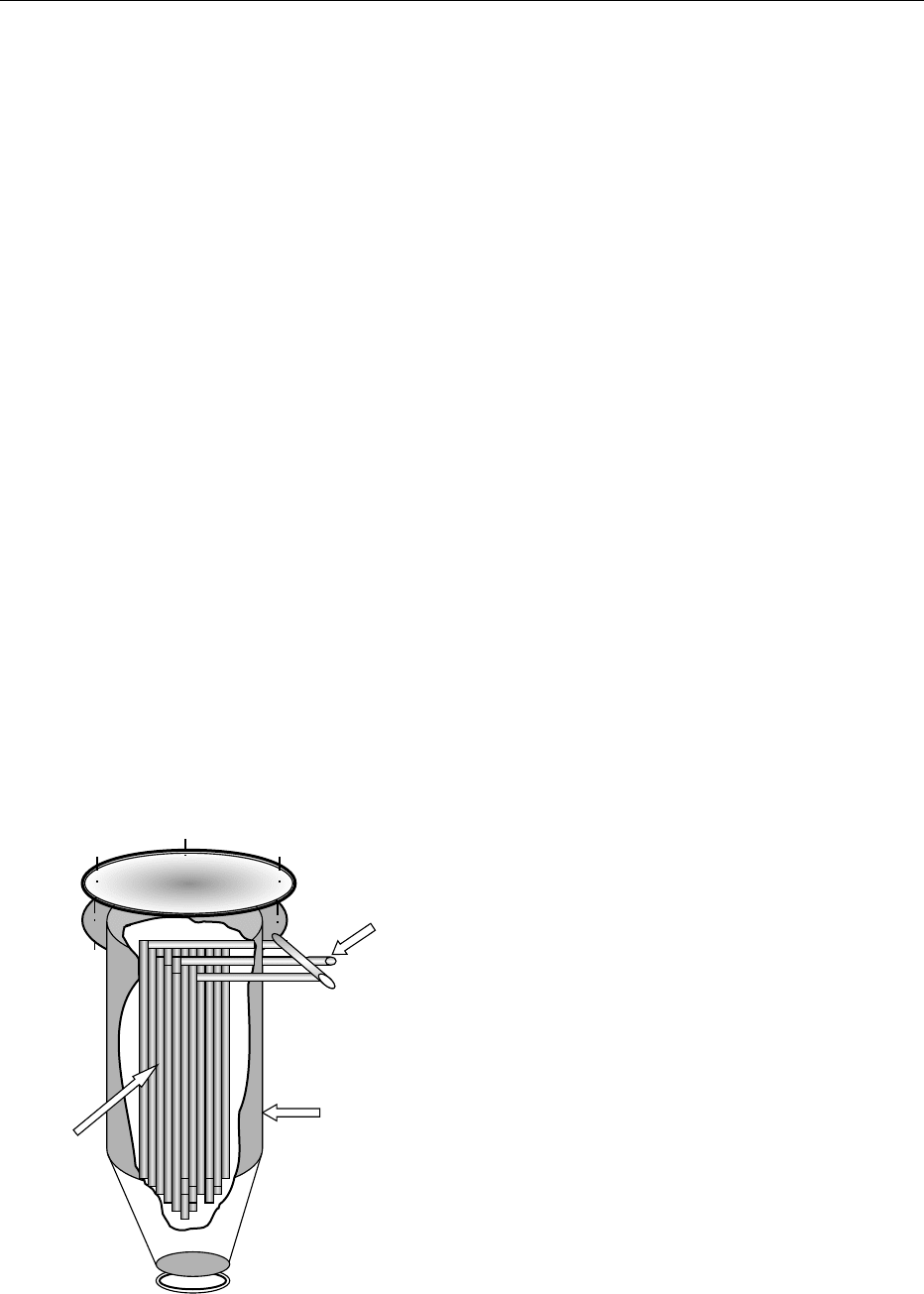
(Figure 9) or horizontal leaves that serve as filter
elements. The leaf is constructed with ribs on both
sides to allow free flow of filtrate towards the neck
and is covered with coarse mesh screens that sup-
port the finer-woven metal screens or filter cloth
that retain the cake. The space between the leaves
may vary from 30 to 100 mm depending on the
cake formation properties and the ability of the
vacuum to hold a thick and heavy cake to the leaf
surface. They may be applied to polishing liquid
foods with very low solids or for cake filtration
with a solids concentration < 20–25%. In contrast
to filterpress, pressure leaf filters may be readily
jacketed for applications whenever hot or cold
temperatures are to be preserved. The cloth mesh
screens that cover the leaves may be accessed more
easily on horizontal than on vertical tanks.
3.
0046 Candle filters may be used in applications that
require efficient low-moisture cake filtration or a
high degree of polishing (finishing). Candle filters
are available in many sizes, containing up to 250
or more filtering elements (Figure 10). The candle
filter consists of three major components: the
vessel, the filtering elements (candles), and the
cake discharge mechanism. Vessel configuration
may be with a conical bottom for cake filtration
and polishing, or with a dished bottom for slurry
thickening. This last vessel is scarcely or never
used in the food industry.
0047 The filtering element generally consists of the fil-
trate core and the filtering medium. The core serves
for filtrate passage and to support the filter medium.
In the food industry the core is a bundle of perforated
stainless-steel tubes. The types of filter medium avail-
able are diverse, such as porous ceramics, woven
mesh screens, sintered metal tubes, or synthetic filter
cloths. Finally, there are two methods of discharging
the cake at the end of the cycle: snap blow or vibrat-
ing mechanism. The advantages of a candle filter are
the excellent cake discharge capacity and its mechan-
ical simplicity.
0048Vacuum filters Vacuum filters are simple and
reliable machines and therefore have gained wide
acceptance in the food industries. Among the differ-
ent types and sizes for standard vacuum filters, the
following are included: drum; disk; horizontal belt;
tilting pan; and table filters.
0049Drum filters are usually utilized in the food indus-
try. Advantages and disadvantages of vacuum filtra-
tion as compared to other separation methods are as
follows:
.
0050Advantages: continuous operation; very effective
polishing (finishing) of solutions (on a precoat
filter); and easy control of operating parameters
such as cake thickness.
.
0051Disadvantages: higher residual moisture in the cake
and difficult to clean (mainly as required for food-
grade applications).
0052Precoat filters are used when liquid foods (e.g.,
clarified apple juice) require a very high degree of
clarity. To polish the solution the drum deck is pre-
coated with an appropriate medium. A scraper blade,
also called the doctor blade, moves slowly towards
the drum and shaves off a thin layer of the separated
solids and precoating material. This movement con-
tinuously exposes a fresh layer of the precoat sur-
face so that when the drum submerges into the
tank it is ready to polish the solution. On precoat
filters the entire drum deck is subjected to vacuum
(Figure 11).
0053Membrane processes The membrane is an interface
between two bulk phases. In the food industry,
membrane processes include a wide range of unit
operations, from sieving to reverse osmosis. However,
during conventional filtration, only the separation of
coarse particles to micron range was considered. This
operation requires frequent cleaning due to a build-up
of a cake layer which results in increased resistance to
filtration. For separation of fine solids from liquids,
cake filtration or cross-flow filtration should be con-
sidered. In this section only cross-flow membrane
filtration will be considered. In cross-flow filtration
(Figure 12) the bulk phase under pressure flows along
Bunch of
candles
Filtrate out
Vessel
fig0010 Figure 10 Candle-type filter.
5192 SEPARATION AND CLARIFICATION
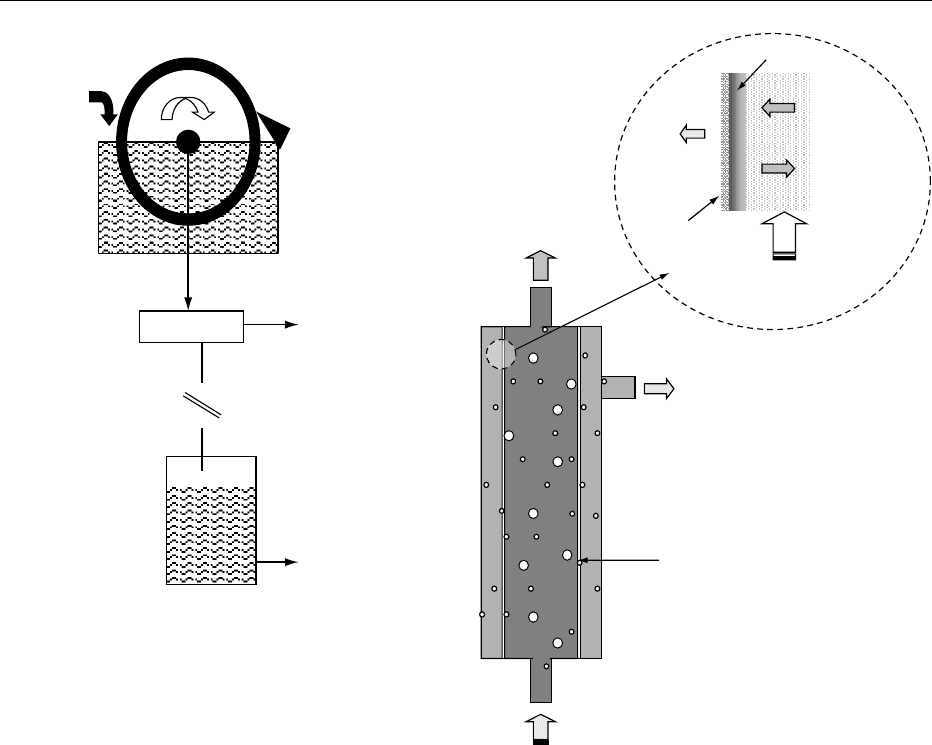
the surface of the membrane, sweeping and at least
partially removing the cake layer. This allows rela-
tively high permeate fluxes over long periods. Reverse
osmosis (RO), ultrafiltration (UF), and microfiltra-
tion (MF) are typical cross-flow filtration methods
that use membranes with varying pore sizes to effect
separation on the basis of size and shape. RO has
membranes with the smallest pore and is used to
separate water from other solutes.
0054 High pressures (up to 10 000 kPa) are required to
overcome the high osmotic pressure of solutes (sugars
and salts). UF has membranes with larger pores and
will retain proteins, lipids, and colloidal salts, while
allowing smaller molecules to pass through to the
permeate phase. Required working pressures during
UF are in the range 130–1400 kPa. MF, with pores
> 0.1 mm, is used to separate fat from proteins and
to reduce microorganisms from fluid food systems.
This process requires the lowest operating pressure
(< 350 kPa).
0055 Table 1 lists examples of commercial uses of mem-
brane processes in different food industries. However,
there are still a number of technical obstacles that still
need to be resolved, including inadequate processing
rates (flux) and separation capabilities (rejection and
selectivity), insufficient membrane or module life,
and incompatible materials.
Clarification
0056Many liquid foods are colloidal suspensions which
must be unstabilized to give a completely transparent
liquid. This process is known as clarification
(Table 2). Usually, colloidal state is only defined in
terms of particle size; the lower limit is generally
taken as 1–5 nm (10–50 A
˚
) and the upper size limit
as 1–5 mm. When the dispersed phase is a solid and
the continuous phase is a liquid, the system is defined
as a sol. A typical example of a food sol is a cloudy
fruit juice, which is a colloidal system where the
continuous medium is a solution of pectin and sugars,
and the dispersed (colloidal) matter is mainly formed
by cellular tissue comminuted during fruit processing.
Pectin is basically a biopolymer made by d-galacturo-
nic acid units.
0057Particles in a cloudy juice adhere together and form
aggregates of increasing size (flocculation) which may
Precoat
Doctor blade
Vacuum pump
Filtrate
Barometric leg
Receiver
Feed
fig0011 Figure 11 Vacuum drum precoat filter.
Retentate
Membrane
Membrane
Permeate (J )
Permeate
Feed
Feed
Rejected solutes
Diffusive flux
Counter-
diffusive flux
fig0012Figure 12 Typical cross-flow membrane process and details of
acting fluxes.
SEPARATION AND CLARIFICATION 5193

settle due to gravity. If flocs change to a much denser
form, it is said to undergo coagulation which is an
irreversible process. For a clear juice, these suspended
particles have to be removed. It may seem simple
merely to filter them out, but unfortunately some
soluble pectin remains in the juice, making it too
viscous to filter quickly. A dose of commercial
enzyme is the accepted way of removing unwanted
pectin. Enzyme depectinization has two effects: it
degrades the viscous soluble pectin and it also causes
the aggregation of cloud particles. Figure 13 shows
how this may happen: pectin forms a protective coat
around proteins in suspension. In an acidic environ-
ment (apple juice typically has a pH of 3.5), pectin
molecules carry a negative charge. This causes them
to repel one another. Pectinase degrades this pectin
and exposes part of the positively charged protein
beneath. The electrostatic repulsion between cloud
particles is thereby reduced, so that they clump
together.
0058 These larger particles will eventually settle out, but
to improve the process, flocculating, also named
fining, agents (Table 1) can be added. Fining agents
work either by sticking to particles, making them
heavy enough to sink, or by using charged ions to
cause particles to stick to each other, making them
settle to the bottom. What is left is a transparent but
by no means clear juice. A second centrifugation and
subsequent filtration (fining) are needed to give the
clear juice that many consumers prefer.
0059Another potential contributor to the haziness of
juice is starch. Unripe apples, for example, may con-
tain up to 15% starch. Although the first centrifuga-
tion (before the juice reaches the clarification tank)
removes most of the starch, about 5% usually
remains. This can be broken down using a specific
enzyme (amyloglucosidase) added at the same time as
tbl0002 Table 2 Fruit juice clarification agents
Name Description
Sparkolloid A natural albuminous protein extracted from kelp and very finely powdered
Gelatin Mixture of gelatins and silicon dioxide, with the active ingredient being animal collagen
Kieselsol Suspension of small silica particles usually used in combination with gelatins. This fining aids in pulling
proteins out of suspension
Bentonite Refined clay (montmorillonite) presented as powder or coarse granules. Bentonite must be added to hot
water: stir well and let it stand for 36–48 h before use, so that it swells and becomes almost gelatin-like
Isinglass Protein produced from sturgeon swim bladders. It is presented either as a fine powder or as dry hard fragments
tbl0001 Table 1 Use of membrane processes in different food industries
Ultrafiltration Reverse osmosis
Beverage industry Sterilization of draft beer Juice concentration in fruit wines
Wine clarification Tartrate removal
Fractionation of whey to produce protein
concentrate
Concentration of whey
Dairy industry Fractionation of milk for cheeses Concentration of milk
Fats and oils industry Recovery of oilseed protein and tocopherol and
oil from waste water
Fruit/vegetable industry Juice clarification Sugar concentration
Juice concentration
Meat processing Concentration of egg white, gelatin, and blood
serum proteins
Sugar/sweetener industry Grain milling Concentration of maple sap
Clarification of dextrose Recovery of sugar from rinse water
+
+
+
+
+
+
+
+
Semistable
colloid
-
-
-
-
-
-
-
-
-
+
+
+ +
+
+
+
+
+
Positively
charged particle
Pectinase
Pectin layer
fig0013Figure 13 How the breakdown of pectin leads to the formation
of aggregated cloud particles during fruit juice clarification.
5194 SEPARATION AND CLARIFICATION
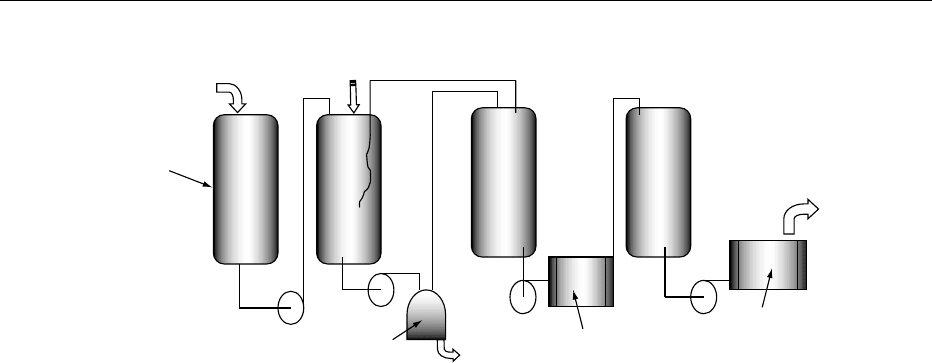
the pectinase. Optimization of fining and ultrafiltra-
tion steps can help retard or prevent postbottling haze
development. Figure 14 shows a typical fruit juice
clarification process.
0060 Prepress treatment with pectinase takes anything
from 15 min to 2 h depending upon the enzyme, the
reaction temperature, and the fruit chosen. Enzyme
treatment is considered to be complete once the vis-
cosity of the juice has returned to its original level or
less. It is important that the pulp is not broken down
too much. Other polysaccharides (like araban, a poly-
mer of the pentose arabinose) may appear as a haze in
fruit juices and other beverages a few weeks after it
has been concentrated. Although commercial pecti-
nase preparations often contain arabanase, certain
fruits (like pears) are rich in araban and may require
the addition of extra arabanase to the clarification
tank.
Clarification by Ultrafiltration
0061 The application of UF as an alternative to conven-
tional processes for the clarification of fruit and vege-
table juices has been demonstrated. However, the
acceptance of UF in the food-processing industry
is not yet complete, because there are problems with
the operation and fouling of membranes. During UF,
two fluid streams are generated: the ultrafiltered
solids free juice (permeate), and the retentate with
variable content of insoluble solids and macro-
molecules.
0062 Permeate flux (J) results from the difference be-
tween a convective flux from the bulk of the retentate
to the membrane and a counterdiffusive flux or out-
flow by which solute is transferred back into the bulk
of the fluid (Figure 12). The value of J is strongly
dependent on hydrodynamic conditions, membrane
properties, and operating parameters. The main
driving force of UF is the transmembrane pressure
(DPTM), which, for example, in the case of hollow
fiber ultrafiltration systems, can be defined as:
PTM ¼ P
i
þ P
o
ðÞ=2 P
ext
ð2Þ
where P
i
¼ pressure at the inlet of the fiber, P
o
¼
outlet pressure, and P
ext
¼ pressure on the permeate
side. In practice, the J-values obtained with apple
juice are much less than those obtained with water
only. This phenomenon is attributable to various
causes, including the concentration polarization
boundary layer (defined as a localized increase in
concentration of rejected solutes at the membrane
surface due to convective transport of solutes) and
plugging of pores due to fouling. Where some of
these phenomena are reversible and disappear after
cleaning of the UF membranes, others are definitively
irreversible.
0063Flux decline due to this phenomenon can be re-
duced by increasing flow velocity on the membrane.
Traditionally, correlations of J with DPTM have been
determined by parameter fitting of the experimental
data.
0064As a summary, membrane processes are limited by
the following factors:
1.
0065They must be combined with other processes or
steps.
2.
0066The process is practically limited to low-viscosity
liquids and foods.
3.
0067Ceramic membranes are versatile, but expensive
to install.
4.
0068Although the membrane process is easy to under-
stand, very careful design and trained and skilled
operators are needed to insure long-term filtering
capacity.
0069A generalized application of membrane technology
in the food industry may require improvements in
thermal stability and chemical resistance; a more
Reception
tank
Juice from
presses
Clarification
agents
Centrifuge
Precoat
filter
Fining
Clarified
juice
fig0014 Figure 14 Fruit juice conventional clarification line.
SEPARATION AND CLARIFICATION 5195

controlled pore structure and narrow pore size distri-
bution; a higher permeate flux; an improved micro-
biological resistance; and more controlled fouling.
See also: Colloids and Emulsions; Filtration of Liquids;
Membrane Techniques: Principles of Reverse Osmosis;
Applications of Reverse Osmosis; Principles of
Ultrafiltration; Applications of Ultrafiltration
Further Reading
Cain CA Jr (1995) Filter aids: use in filtration. In: McKetta J
(ed.) Encyclopedia of Chemical Processing and Design,
vol. 21, pp. 348–372. New York: Marcel Dekker.
Cheryan M (1986) Ultrafiltration Handbook. Lancaster,
PA: Technomic.
Dahlstrom D (1995) Filtration. Vacuum systems. In:
McKetta J (eds) Encyclopedia of Chemical Processing
and Design, vol. 21, pp. 412–432. New York: Marcel
Dekker.
Jahreis CA (1995) Filtration. Pressure systems. In:
McKetta J (ed.) Encyclopedia of Chemical Processing
and Design, vol. 21, pp. 380–396. New York: Marcel
Dekker.
Letka A, Moll RT and Shapiro L (1997) Separation (centri-
fugal). In: Kirk-Othmer Encyclopedia of Chemical
Technology, 3rd edn., vol. 21, pp. 828–875. New York:
Wiley.
Loncin M and Merson RL (eds) (1979) Mechanical Oper-
ations. In: Food Engineering. Principles and Selected
Operations, pp. 231–264. New York: Academic Press.
Lozano JE, Constenla DT and Carrı
´n
ME (2000) Ultrafil-
tration of apple juice. In: Lozano JE, An
˜
o
´
n MC,
Parada-Arias E and Barbora-Ca
´
novas G (eds) Trends
in Food Engineering. Food Preservation Technology
Series, pp. 117–134. Lancaster, Basel, USA: Technomics.
Perry RH and Green DW (eds) (1984) Liquid–solid systems.
In: Chemical Engineering Handbook. Section 19, pp.
1–109. New York: Mc Graw-Hill.
Svarovsky L (1997) Sedimentation. In: Kirk-Othmer
Encyclopedia of Chemical Technology, 3rd edn., vol.
21, pp. 667–685. New York: Wiley.
Wallas SM (1995) Solid liquid separation. In: McKetta J
(ed.) Encyclopedia of Chemical Processing and Design,
pp. 457–472. New York: Marcel Dekker.
Shark See Fish: Introduction; Catching and Handling; Fish as Food; Demersal Species of Temperate Climates;
Pelagic Species of Temperate Climates; Tuna and Tuna-like Fish of Tropical Climates; Demersal Species of
Tropical Climates; Pelagic Species of Tropical Climates; Important Elasmobranch Species; Processing;
Miscellaneous Fish Products; Spoilage of Seafood; Dietary Importance of Fish and Shellfish; Fish Farming; Fish
Meal
SHEEP
Contents
Meat
Milk
Meat
A J Kempster, Formerly of Meat and Livestock
Commission, Snowdon Drive, Milton Keynes, UK
This article is reproduced from Encyclopaedia of Food Science,
Food Technology and Nutrition, Copyright 1993, Academic Press.
Background
0001 Lamb is the meat from young sheep. It should be dis-
tinguished from mutton, which is from adult animals.
The two categories together are referred to as sheep
meat.
0002Sheep, raised for both meat and wool production,
form a significant part of the economy of many coun-
tries. The current world production of mutton and
lamb is 6.5 million tonnes (FAO, 1990). Sheep are
farmed in all the main regions of the world, but it is
notable that 17% occur in Australia and New Zea-
land and that exports from these countries are the
core of world trade.
0003Sheep farming is possibly the most diverse branch
of animal production. There are hundreds of breeds,
each with its particular environmental niche and eco-
nomic function. There is a large variation between
the major sheep-producing countries in climatic
5196 SHEEP/Meat
